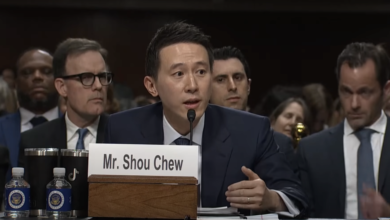On Nov. 3, the government of Pakistani military dictator Gen. Pervez
Musharraf declared emergency rule, suspended the constitution, and
imposed a Provisional Constitutional Order making it possible to
rule by decree. Musharraf cited “rising Islamist militancy” and
“growing judicial interference in government functioning” as the
reasons for the effective martial law.
|
was Chief Justice Iftikhar Mohammad Chaudhry, a judge that
Musharraf had sacked earlier in the year, only to be forced to
reinstate him in response to large protests. Military forces quickly
surrounded the Supreme Court and detained the judges. They have been
held under house arrest with their communications cut off.
Pakistan’s security forces ruthlessly attacked demonstrators, led by lawyers protesting the imposition of martial law. Thousands of lawyers, activists, human rights advocates, opposition party figures and others have been detained.
The military government placed severe restrictions on the press. A dozen news stations were taken off the air. Even broadcasters from imperialist countries like the BBC and CNN were cut off.
In Islamabad, police forces blocked the Parliament and Supreme Court buildings. On Nov. 8, Musharraf announced that parliamentary elections would be held in February 2008.
Instability of the dictatorship
The crackdown was not an unanticipated event.
As early as Aug. 8, the government had announced that it was
considering imposing a state of emergency in response to “external
and internal threats.” The timing for the crackdown may be
connected to the Supreme Court’s expected ruling on Musharraf’s
reelection. Given the fraudulent nature of the election held under
military rule, it was widely anticipated that the ruling would not be
in Musharraf’s favor.
But the problems of the dictatorship are not limited to its battle
with the Supreme Court. In Swat Valley, in northwestern Pakistan,
fighters loyal to Islamic cleric Mullah Fazlullah have taken
control of the towns of Matta, Khawazkhela, Kalam, Madian and
Bahrain. Paramilitary troops and police have surrendered their
weapons to militants.
The day before the imposition of martial law, engineers of Pakistan International Airlines went on strike, demanding a wage increase and an improvement in working conditions. The strike caused the cancellation of 92 flights, both local and international.
There is an upsurge in labor struggles, particularly among the workers of water and power, telecom, railways, the garment industry and others. In recent months, different segments of the Pakistani population have been in motion in opposing the dictatorship, a most worrisome prospect for Musharraf and his U.S. backers.
A history of rule as a client state
Since the formation of the country in 1947, Pakistan’s rulers have been an indispensable part of imperialist policy in the region.
When the strong mass movement for independence defeated British colonial rule over India, the partition of India along ethnic lines was Britain’s way of maintaining control of part of what used to be its colony.
Mohammed Ali Jinnah, founder of the Muslim League and the first leader of Pakistan, was safely on the side of the imperialists. But India, led by Gandhi and Nehru, was fiercely independent and a thorn in the side of their former colonizers. India went on to become one of the leaders of the non-aligned movement, with friendly ties to the Soviet Union. The U.S. government propped up Pakistan’s state against India.
Pakistan’s position makes it especially important in imperialist
geopolitical strategy. Pakistan is situated in the western part of
the Indian subcontinent, with Afghanistan and Iran on the west, India
and China on the east, and the Arabian Sea on the south. Pakistan’s
ports on the Arabian Sea and its borders with Iran, Afghanistan and
China make it a strategic country for the United States.
Since its formation, Pakistan has been mostly under military rule, with its brief periods of civilian “democracy” tightly monitored by the military
As the United States was engaged in a struggle to bring down the leftist regime in Afghanistan in the 1980s, Pakistan played a key role in facilitating U.S. support for the Mujahedeen, the CIA’s “freedom fighters.”
When Kabul fell in 1992, the Mujahedeen proved to be too fragmented and too criminal to establish any kind of stability in Afghanistan that would serve long-term imperialist interests. Pakistan’s intelligence service, the ISI, became the architect of the Taliban’s formation. With U.S. support, the ISI helped the Taliban capture most of Afghanistan in 1996.
Following Sept. 11, 2001, the United States launched its new “war on
terror,” a code word for a war against all forces of independence
worldwide. Washington invaded Afghanistan to set the stage for
militarily “redrawing the map of the Middle East.” Pakistan’s
government broke its ties with the Taliban. Since then, Pakistan
has been instrumental in helping the U.S.-led NATO occupiers of
Afghanistan quell the resistance of the Afghan people.
But the role that Pakistan’s mostly military rulers have played at
the service of U.S. imperialism is in no way reflective of the
sentiments of the Pakistani masses. The vast majority of Pakistanis
despise Musharraf’s military dictatorship and his service to
imperialism. Reflective of this popular sentiment, a 2007 survey by
Pew Global Attitudes showed only 15 percent of Pakistanis having a
favorable view of the U.S. government.
Deplorable living conditions
Pakistan’s military and political elite have implemented the neoliberal policies of the IMF and the World Bank.
Privatizations and downsizings have cost Pakistani workers thousands of jobs and plunged them deeper into poverty.
 |
A recent study conducted by the Asian Development Bank provides a
glimpse into the extremely low quality of life that Pakistan’s state
has provided to its people. “Compared with Bangladesh, India and Sri
Lanka, Pakistan’s school enrolment is lower, adult illiteracy is
higher, and infant and child mortality rates are higher.” The
proportion of Pakistan’s population still living in poverty was 32.1
per cent in 2005, it added.
The study reported that the infant mortality rate is 73 per 1,000
live births, child mortality is 100 per 1,000 live births and
maternal mortality is 400 per 100,000 live births.
U.S. reaction to martial law
Gen. Musharraf has been in power since a 1999 military coup. Ever since then, Musharraf has always promised the restoration of democracy.
Of course, even if the people had the power to vote in bourgeois elections, it would not mean that the government would serve their needs. But Musharraf’s dictatorship is so unpopular that any kind of “free elections” would guarantee his loss of power.
What Musharraf lacks in popular support and legitimacy, he makes up for in U.S. support. Pakistan has been the recipient of approximately $10 billion of U.S. aid since 2001. Most has been directed toward Pakistan’s military.
Washington would prefer to give Pakistan’s client state a democratic facelift. This is why it supported the British-brokered deal between former prime minister Benazir Bhutto and Musharraf, enabling Musharraf to maintain power while allowing Bhutto to get “democratically” elected to prime minister.
The deal has been costly to Bhutto and has borne no fruit for her. Bhutto’s popularity has greatly suffered not just among the public but specifically within her own People’s Party, many of whose members are opposed to dealing with the military dictatorship. This is why Bhutto has spoken out against the imposition of martial law in recent days.
If Musharraf calls off his emergency rule and restores the pre-martial law pseudo democracy, it is still possible that the Musharraf-Bhutto deal may materialize. That might be a desired outcome for Washington. But Washington is not willing to take a chance on losing its control of the Pakistani state.
To the extent that the entire Pakistani political establishment is in danger of complete collapse, Washington will support Musharraf at any cost.
Since the imposition of martial law, U.S. officials have made public proclamations in favor of democracy in Pakistan.
On Nov. 7, President Bush told reporters that he had told Gen. Musharraf to hold elections and take off his military uniform. But questioned about the reason for his soft approach to Pakistan as opposed to Myanmar, Bush stated: “Pakistan has been on the path to democracy.”
Pakistan, however, is a country that has been ruled by a military dictator for the past eight years and through most of its history. The real difference, of course, is that Pakistan’s military dictatorship serves Washington and Myanmar’s does not.
Bush administration officials have been careful to avoid suggesting a cutoff of U.S. aid to Pakistan, citing its services in the “war on terror.”
Reporting to the House Foreign Affairs Committee on Pakistan, U.S. deputy secretary of state John Negroponte said: “No country has done more in terms of inflicting damage and punishment on the Taliban and the al-Qaida since 9-11. Their record is quite impressive.”
Now that the Supreme Court judges have been removed and the demonstrations have been repressed for the moment, Musharraf could end martial law and “restore democracy” if he sees the situation under control.
But with or without martial law, the question is whether this unpopular military dictatorship will survive, or will the struggle of the Pakistani masses reach a level that no amount of repression will be able to hold back.






